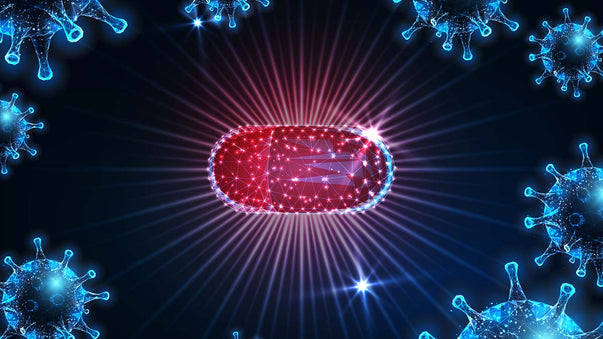Are Amino Acid Derivatives the Precursors of Life?

Researchers at Hiroshima University have suggested a link between chemistry and life. And they've built a prebiotic chemical precursor of biology.
"Chemical evolution was first proposed in the 1920s as the idea that life first originated with the formation of macromolecules from simple small molecules, and those macromolecules formed molecular assemblies that could proliferate," says researcher Muneyuki Matsuo in a press release issued by Hiroshima University.
"However, the origin of molecular assemblies that proliferate from small molecules has remained a mystery for about a hundred years since the advent of the chemical evolution scenario. It has been the missing link between chemistry and biology in the origin of life."
A paper is published in Nature Communications. It reports that the researchers designed and synthesized a small molecule derived from amino acids, as a precursor to the self-assembly of primitive cells. When added to room temperature water at atmospheric pressure, the amino acid derivatives condensed into droplets. And the droplets grew in size and in number when fed with more amino acids.
"A droplet-based protocell could have served as a link between 'chemistry' and 'biology' during the origins of life," adds Matsuo. "This study may serve to explain the emergence of the first living organisms on primordial Earth… [Our] results suggest that droplets became evolvable molecular aggregates - one of which became our common ancestor."
The researchers claim to have advanced toward solving “the long-standing mystery of how prebiotic ancestors were able to proliferate and survive by selectively concentrating prebiotic chemicals.” They plan to continue investigating the process of evolution from amino acid derivatives to primitive living cells. And they plan to improve their platform to verify and study the origins of life and continued evolution.
The researchers also found that the droplets could concentrate nucleic acids (genetic material). And they were more likely to survive against external stimuli if they exhibited this function.
To me, this is very interesting, because it seems to imply that lifeless chemistry exhibits a drive toward life. In fact, the authors say that they were inspired by the work of Nobel Prize winning biochemist Christian de Duve. And they cite de Duve’s book, “Blueprint for a Cell: The Nature and Origin of Life.”
Life, according to de Duve’s book, is an intrinsic part of the universe. “Wherever and whenever conditions are favorable, as they were here on Earth, and probably were, are, or will be elsewhere, the universe cannot but blossom into life.”
More Articles
Don't miss a beat! In our Pulse Newsletter, Thrivous curates the most important news on health science and human enhancement, so you can stay informed without wasting time on hype and trivia. It's part of the free Thrivous newsletter. Subscribe now to receive email about human enhancement, nootropics, and geroprotectors, as well as company news and deals.
Read more articles at Thrivous, the human enhancement company. You can browse recent articles in Thrivous Views. See other Pulse Newsletter articles. Or check out an article below.
-
Antiviral Pills for COVID-19 Show Encouraging Results
Pfizer announced that its COVID-19 oral antiviral candidate, Paxlovid, significantly reduced hospitalization and death. This was based on an interim ...
-
The Hannum Epigenetic Clock Measures Biomarkers of Aging
Epigenetic clocks, like the Horvath aging clock described in a previous post, capture aging processes at the molecular level. "It's ...


